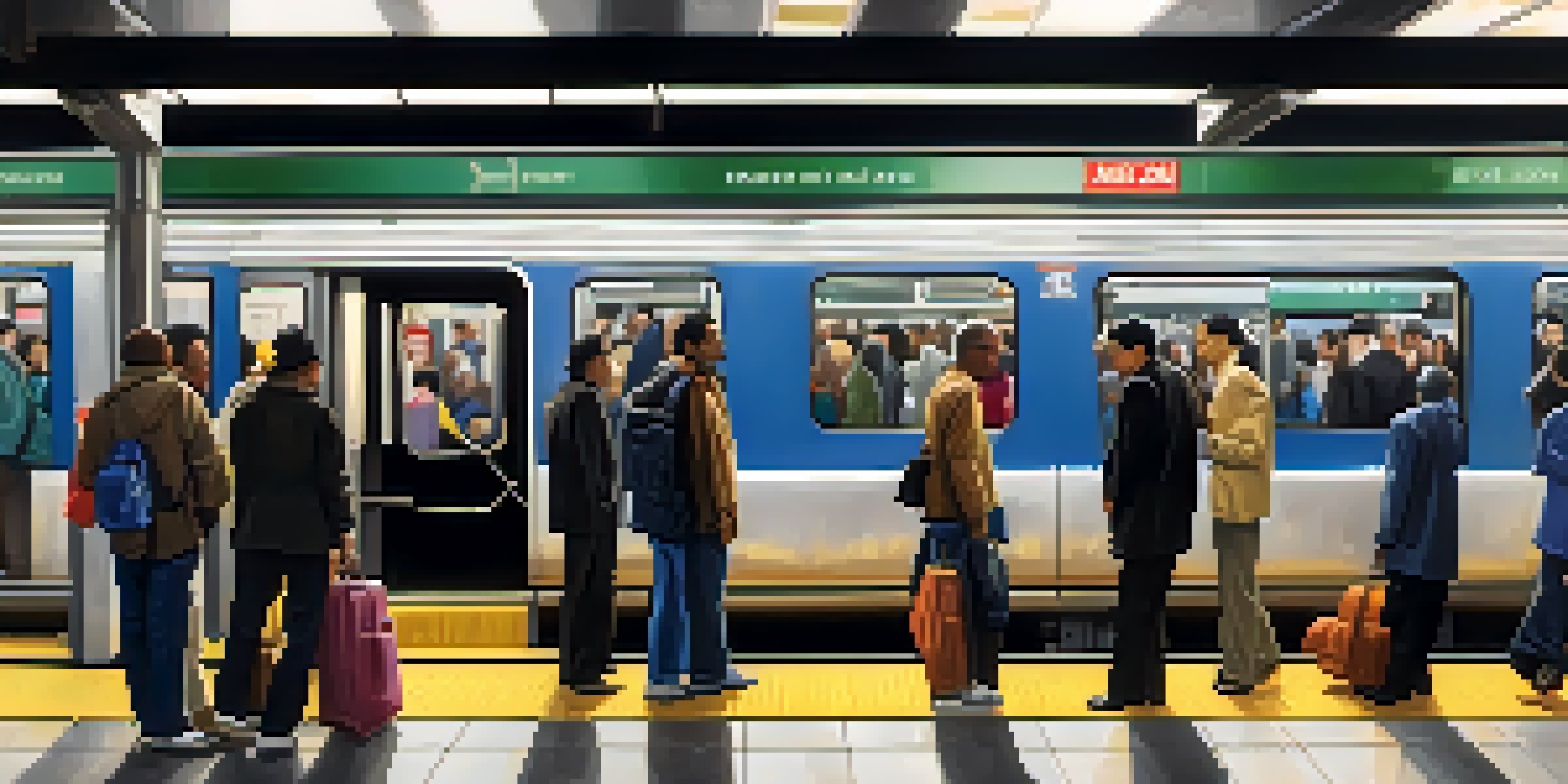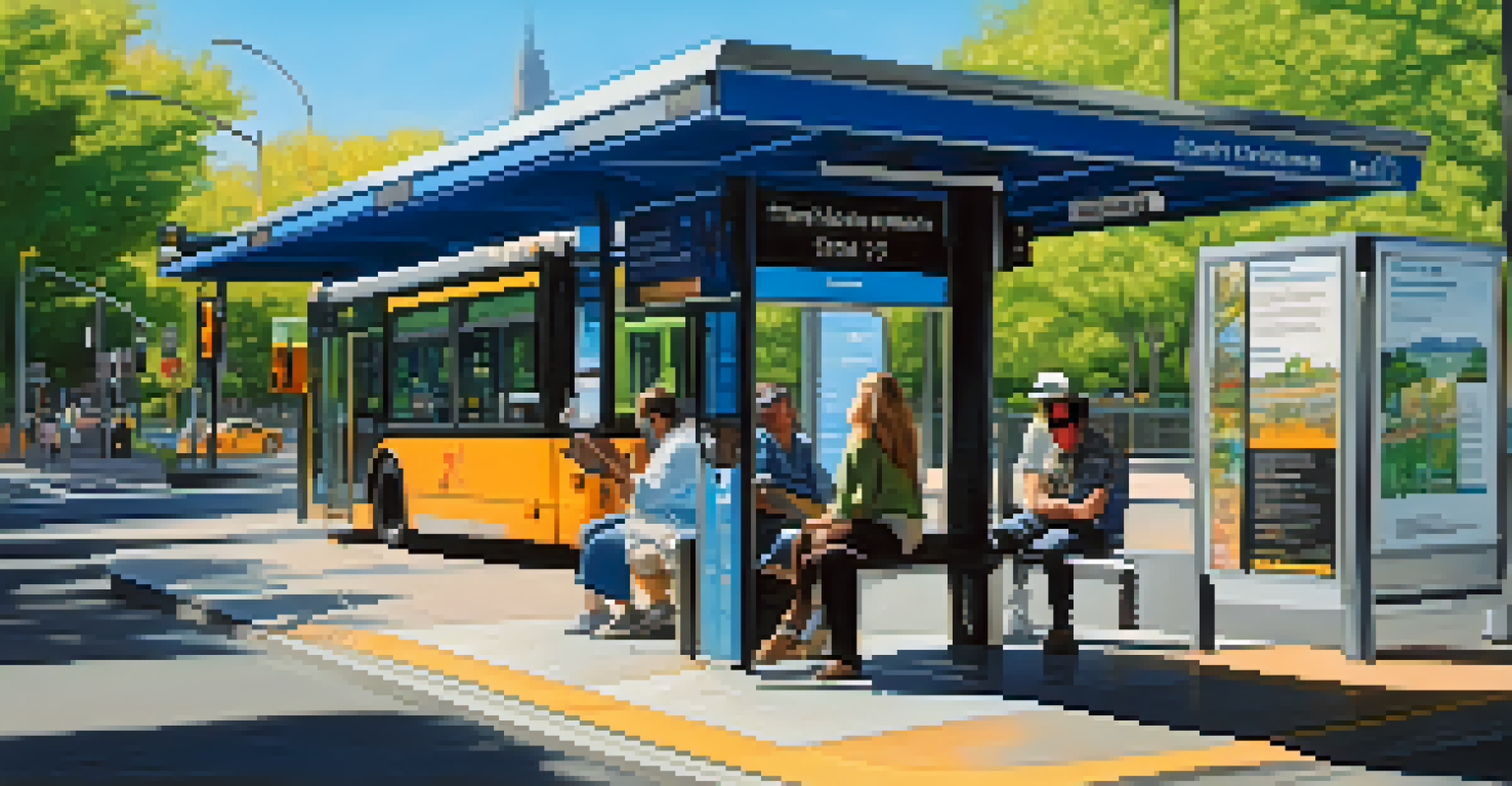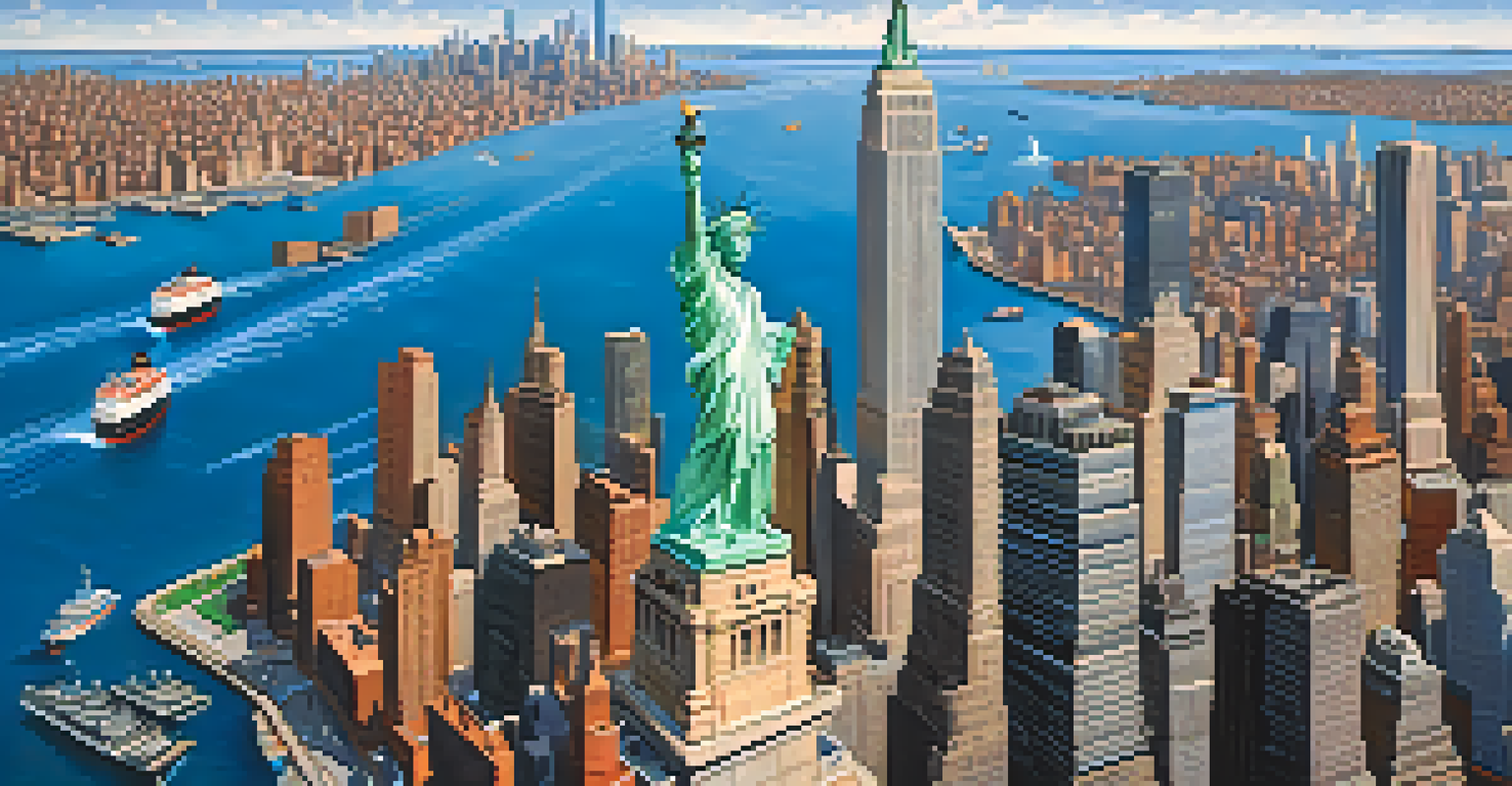Understanding Fare Structures in NYC's Public Transportation

An Overview of NYC's Public Transportation System
New York City boasts one of the most extensive public transportation systems in the world, encompassing subways, buses, and ferries. Each mode of transport plays a crucial role in connecting millions of residents and tourists alike. Understanding how these systems operate, especially regarding fares, can make your travel experience smoother and more cost-effective.
Public transportation is a vital part of urban life, connecting people to opportunities and resources.
The Metropolitan Transportation Authority (MTA) oversees this vast network, ensuring efficient service while navigating the complexities of urban commuting. With millions of trips taken daily, the MTA continuously adapts its fare structures to meet the needs of a diverse ridership. Familiarizing yourself with these structures is essential for anyone looking to navigate the city efficiently.
Whether you’re a daily commuter or a visitor, grasping the fare system will help you plan your journey better. From single rides to unlimited passes, knowing your options is key to maximizing your NYC experience.
Types of Fare Options Available
NYC's public transportation offers a variety of fare options to cater to different needs. The most common is the pay-per-ride fare, which allows you to pay for each trip individually. Additionally, there are options like the 7-Day and 30-Day Unlimited MetroCards, which provide unlimited rides within their respective time frames.

For those commuting frequently, the unlimited passes can lead to significant savings, especially if you use the subway or buses multiple times a day. On the other hand, if your travel is sporadic, the pay-per-ride option might be more economical. Understanding these choices helps you tailor your travel expenses to your usage patterns.
Understanding NYC Fare Options
Familiarizing yourself with the various fare options, including pay-per-ride and unlimited passes, can help you save money while navigating the city.
Moreover, there are reduced fares for seniors and people with disabilities, making public transport more accessible. It's worth exploring all your options to find what best suits your travel habits.
How to Purchase Fare Cards and Passes
Purchasing fare cards in NYC is a straightforward process, with multiple methods to choose from. You can buy MetroCards at vending machines located in subway stations, which accept cash, credit, and debit cards. Alternatively, you can also purchase them from station agents and select retail locations throughout the city.
The best way to get around New York City is to embrace the public transit system—it’s the lifeblood of the city.
For those who prefer a digital approach, the MTA's official app allows users to buy and manage their fare cards right from their smartphones. This convenience can save you time during busy commuting hours, letting you skip the lines at vending machines. Plus, the app provides real-time updates on service changes and delays, making it a handy travel companion.
Lastly, don't forget to keep an eye out for promotional deals or special offers that the MTA might run. These can provide additional savings for frequent travelers.
Understanding the Fare Capping System
The fare capping system is a relatively new feature that can benefit New Yorkers and visitors alike. Essentially, it ensures that you never pay more than a set amount for your travel within a given week. Once you reach the cap, any additional rides within that timeframe are free, which can lead to significant savings.
This system is especially advantageous for those who may not want to commit to a weekly or monthly unlimited pass but still use public transport frequently. By simply tapping your MetroCard or contactless payment method, the system tracks your spending and applies the cap automatically. This feature makes it easy to keep tabs on your commuting costs.
Tips for Efficient Travel Planning
Knowing peak and off-peak hours allows you to plan your trips better, saving both time and avoiding crowded travel conditions.
Understanding how fare capping works can help you make informed decisions about when and how often to travel. It’s yet another way the MTA is working to make public transportation more affordable and user-friendly.
Special Fares and Discounts to Consider
In addition to standard fare options, NYC's public transportation offers various special fares and discounts worth considering. Students, seniors, and individuals with disabilities can benefit from reduced fares, making travel more affordable for these groups. It's important to carry the appropriate identification to access these discounts when purchasing fare cards.
Seasonal promotions or special events may also come with unique fare offers that can save you money. For instance, during the summer, the MTA occasionally introduces discounts for tourists or special events, allowing visitors to explore the city without breaking the bank. Keeping an eye on the MTA's announcements can help you take advantage of these deals.
Lastly, if you plan to use public transport extensively for tourism, look into the MetroCard that allows for both subway and bus rides. This flexibility can enhance your sightseeing experience while keeping costs manageable.
Navigating Peak and Off-Peak Fares
Understanding peak and off-peak fares is essential for anyone looking to save money while traveling on NYC's public transportation. While the standard fare remains consistent throughout the day, off-peak hours tend to be less crowded, making travel more comfortable. Knowing when these hours occur can help you plan your trips more effectively.
Typically, off-peak hours are during mid-morning and late evening on weekdays, as well as all day on weekends. If your schedule allows, opting to travel during these times can not only provide a quieter ride but also enhance your overall experience. Plus, it can help you avoid the hustle and bustle of rush hour.
Digital Tools for Easy Purchases
Utilizing the MTA's official app for fare purchases and real-time updates can enhance your travel experience in New York City.
By being mindful of when you travel, you can enjoy the benefits of a less crowded system and possibly find yourself exploring parts of the city with fewer tourists. It’s a win-win situation!
Tips for Managing Your Transportation Budget
Managing your transportation budget while navigating NYC's public transport can be a challenge, but with some thoughtful planning, it’s entirely feasible. Start by assessing your typical travel patterns—how often you travel, the distances you cover, and whether you prefer buses or subways. This will help you determine the most cost-effective fare option.
Consider setting a monthly budget for transportation expenses, and stick to it as closely as possible. Track your spending to identify trends and adjust your fare choices accordingly. For instance, if you find yourself using public transport more than anticipated, it may be worthwhile to switch to an unlimited pass.

Lastly, don’t forget to factor in the benefits of walking whenever possible. NYC is a walkable city, and opting to walk short distances not only saves you money but also lets you experience the vibrant streets and neighborhoods up close. Combining walking with public transport can help you manage your budget effectively.